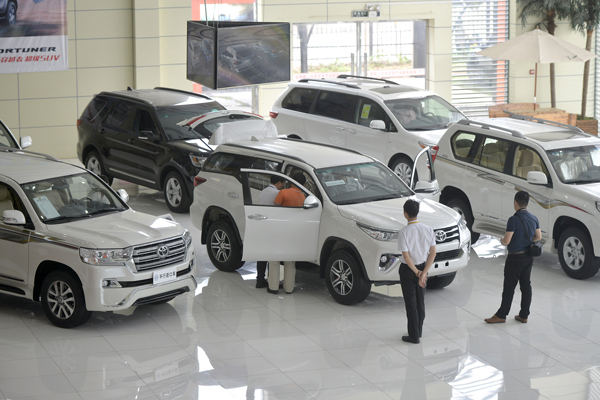 |
|
Parallel-imported vehicles are displayed at the Qianhai Bay free trade port zone in Shenzhen. [Photo provided to China Daily] |
China's vehicle parallel import business dragged down prices and maintained luxury car sales volume, while the high-end market has cooled over the past several years.
The parallel-imported vehicles have served as a stock supply channel for imported car sellers, with lower prices than the carmakers' channel to fit niche markets.
The country gave the green light for cars to be imported directly from manufacturers in October 2014, allowing the stock to be delivered to domestic dealers. The parallel-imported cars were available for individual buyers in February 2015, after the Shanghai Free Trade Zone started its pilot plan to allow the first batch of 17 companies.
"The parallel-imported vehicles are critical to the Chinese market, despite the relatively small volume. Their comparatively low prices influence the pricing of the imported vehicle market, as the market is not very big," Jia Xinguang, senior analyst with the China Automobile Dealers Association, told China Daily.
He believes that the parallel-imported vehicles, sold at a lower price, helped break the monopoly of carmakers pricing the imported cars unreasonably high before introducing them to the market.
Industrial data showed that import car prices dropped an average of 79,000 yuan ($11,847) in the first six months this year, equivalent to a 12.7-percent discount.
The parallel-imported cars made up about 13 percent of the total import vehicles delivered to China in the first half of this year.
The volume of parallel-imported vehicles jumped by 9.2 percent in the first six months to 54,548 units, while imported cars registered a sales volume of 421,000 units, a decline of 9.3 percent.
The imported car market has shrunk by about 20 percent over the past year. In contrast, the volume of parallel-imported vehicles surged by more than 20 percent.
Zhao Wenhai, director of Cars International Group Shares Ltd, said: "Months after the parallel-import business started, the 4S dealerships selling imported cars started price cuts.
"There were big price gaps between the cars imported from our channel and the carmakers' channels."
He said that many imported car sellers came to the ports seeking reasonable prices from trustworthy parallel-importers.
His trading company imported cars from overseas markets and sold to domestic sellers at a lower price than the carmakers' channel, allowing individual buyers to enjoy the savings when purchasing a parallel-imported car.
Industrial insiders said that the parallel-importers' and the carmakers' channels get the car stock at similar prices at the very beginning.
But the carmakers' channels have such complicated hierarchies that each level needs the profits from each imported car, passing along those costs to the customer.
After nearly two years of operation, the parallel-import businesses have moved into a new phase after the nation started to give the China Compulsory Certificate to those cars in the second half of this year.
"The parallel-imported products now meet all of the country's requirements," Zhao said.
"Before, the carmakers would make modifications at the port whenever a car was shipped to China. Now, every importer can make modifications too, so the parallel-imported car is just as compatible with the Chinese mainland situations."
He said confidently that it's much easier than before to get a car registration plate for parallel-imported cars.
However, the parallel importers are now suffering low profitability, after the carmakers' 4S dealers lowered the retail price to a range closer to that of the parallel importers.
"In turn, we have to further reduce the price of our parallel-imported cars. Sometimes we make only 10,000 yuan profit from a car sold for 700,000 yuan. We are now seeking more models that are not available in the mainland market, to fill the market gap," Zhao added.
